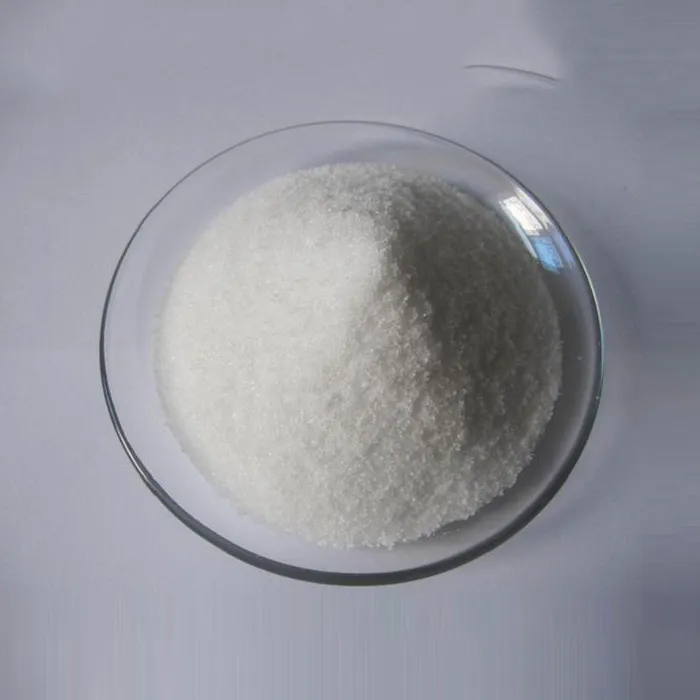Polyacrylamide A Multifaceted Polymer with Diverse Applications
Polyacrylamide (PAM) is a synthetic polymer primarily derived from acrylamide monomers, which are linked together to form a long-chain molecular structure. Known for its versatility and effectiveness, polyacrylamide has gained prominence in various fields ranging from agriculture to water treatment, and from pharmaceuticals to oil recovery. This article explores the properties, applications, and significance of polyacrylamide in modern industries.
Properties of Polyacrylamide
Polyacrylamide is characterized by its high molecular weight and water-soluble nature. Depending on the degree of hydrolysis of the polymer, it can be classified into three types non-ionic, anionic, and cationic. Each type exhibits distinct properties, which make them suitable for specific applications. Anionic polyacrylamide, for instance, is widely used in applications that require flocculation and sedimentation, while cationic variants are effective for applications needing charge neutralization.
One of the remarkable features of polyacrylamide is its ability to absorb large amounts of water. This property makes it particularly useful in fields like agriculture, where it acts as a soil conditioner, enhancing water retention and promoting better plant growth. Furthermore, polyacrylamide can form gels, allowing it to function effectively in various applications that require thickening or stabilizing agents.
Applications in Water Treatment
One of the most significant applications of polyacrylamide is in the water treatment industry. It is employed as a flocculant, helping to aggregate suspended particles in water and facilitating their removal. In municipal wastewater treatment plants, PAM plays a crucial role in reducing turbidity, separating solids from liquids, and enhancing the efficacy of sludge dewatering processes. By improving the efficiency of these processes, polyacrylamide contributes to cleaner water and ensures compliance with environmental regulations.
Use in Agriculture
poly acrylic amide

In agriculture, polyacrylamide is increasingly popular as a soil amendment. Its ability to retain moisture helps farmers conserve water, particularly in arid regions. By incorporating PAM into soils, farmers can reduce irrigation frequency and enhance crop yields. Moreover, the polymer helps to prevent soil erosion by stabilizing soil structure, which is crucial for maintaining soil health and productivity. As concerns regarding water scarcity grow worldwide, the use of polyacrylamide in agriculture presents a sustainable solution to enhance water efficiency.
Pharmaceutical and Biomedical Applications
Beyond its industrial uses, polyacrylamide has made strides in the biomedical field. Its biocompatibility and ability to form hydrogels make it suitable for drug delivery systems, tissue engineering, and wound healing applications. Polyacrylamide gels can be engineered to control the release of therapeutic agents, ultimately improving drug efficacy and patient outcomes. Additionally, PAM’s role in separating biomolecules via gel electrophoresis demonstrates its importance in molecular biology and research settings.
Oil Recovery
Polyacrylamide is also employed in enhanced oil recovery (EOR) techniques. By injecting polyacrylamide solutions into oil reservoirs, operators can increase the viscosity of water used for oil extraction. This results in improved oil recovery rates as the polymer facilitates better displacement of oil from reservoir rocks. The usage of PAM in this context not only boosts production efficiency but also minimizes environmental impacts by reducing the need for more invasive extraction methods.
Conclusion
In summary, polyacrylamide is a potent polymer with a wide array of applications across multiple industries. Its unique properties, including water solubility, gel formation capabilities, and flocculation efficiency, make it an invaluable material in water treatment, agriculture, biomedical applications, and enhanced oil recovery. As innovation continues to shape the future of these industries, the significance of polyacrylamide is expected to grow, providing solutions to some of the most pressing challenges faced today, such as water scarcity, environmental sustainability, and health care advancement. The versatility and effectiveness of polyacrylamide underline its important role in modern science and technology.

